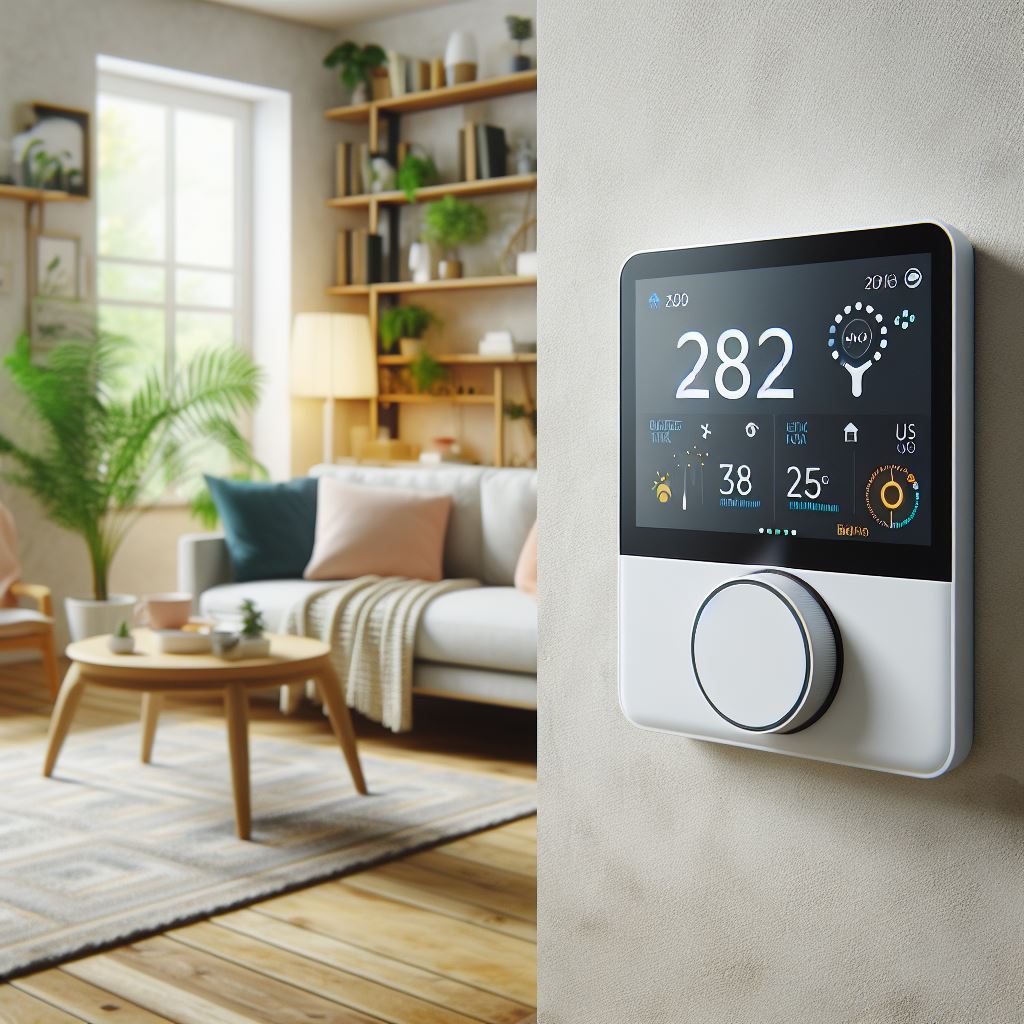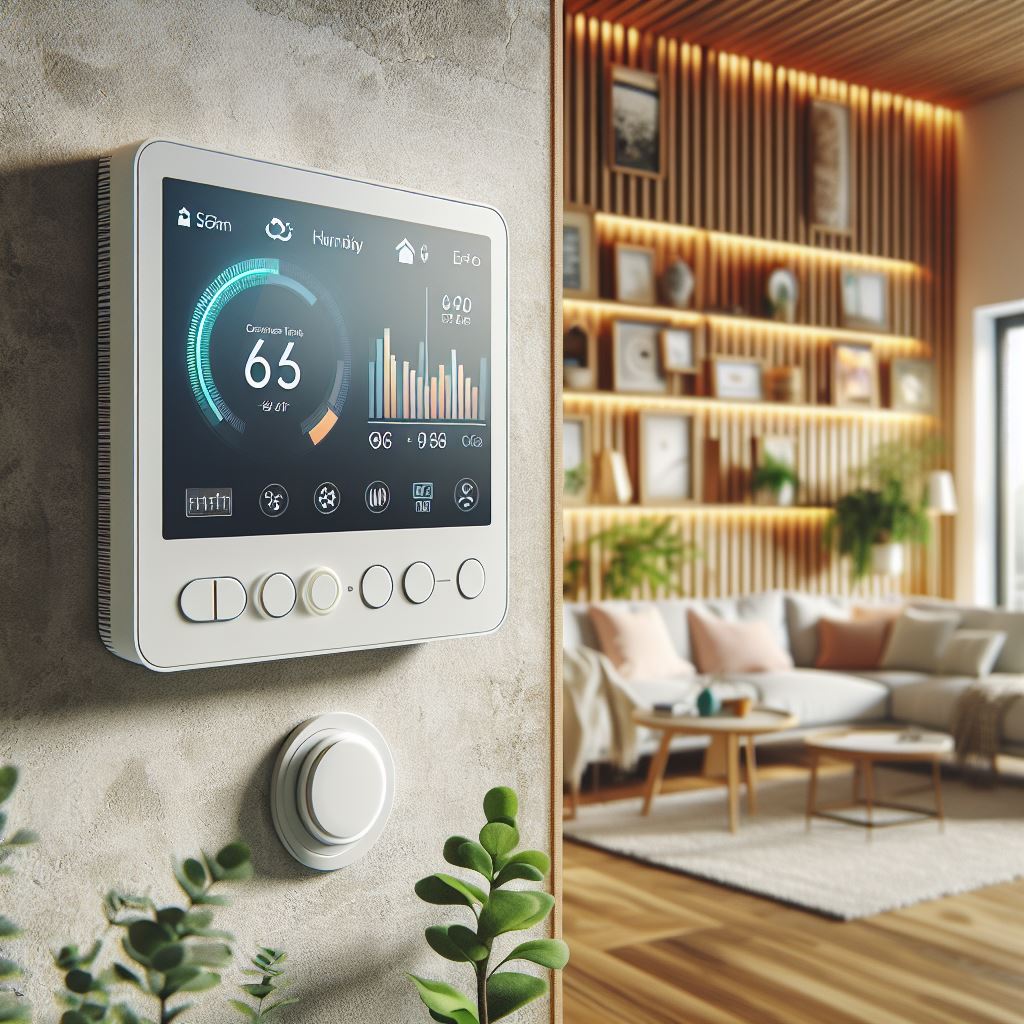The Role of MLCC in Smart Thermostat

Smart thermostats are a modern innovation that revolutionizes the way we control the temperature in our homes. Unlike traditional thermostats that require manual adjustment, smart thermostats are equipped with advanced features that allow them to learn your schedule, preferences, and even adjust settings automatically to optimize energy efficiency.
Benefits of Smart Thermostats
Energy Savings: Smart thermostats can save energy and reduce utility bills by automatically adjusting the temperature based on your schedule and habits.
Convenience: With features like remote control and voice commands, smart thermostats offer unparalleled convenience in managing your home’s temperature.
Comfort: By learning your preferences, smart thermostats can ensure that your home is always at the perfect temperature when you need it.
Insightful Data: Smart thermostats provide valuable insights into your energy usage, helping you make informed decisions to further improve efficiency.

How Smart Thermostats Work
Smart thermostats use a combination of sensors, algorithms, and connectivity to function. They can sense when you’re home or away, learn your schedule, and adjust the temperature accordingly. Some models even use geofencing to track your location and ensure that your home is at the right temperature when you arrive.
MLCCs in Smart Thermostats
MLCC, or Multi-Layer Ceramic Capacitor, play a crucial role in the functionality of smart thermostats. These tiny electronic components are used for noise suppression, voltage regulation, and filtering, ensuring that the thermostat operates smoothly and efficiently.
In the next section, we’ll explore the specific role of MLCCs in smart thermostats and how they contribute to their overall performance. Stay tuned!
Role of MLCCs in Smart Thermostats
Multi-Layer Ceramic Capacitors (MLCCs) are essential components in the design and functionality of smart thermostats. These small, ceramic-based capacitors play a crucial role in ensuring the smooth and efficient operation of smart thermostat systems. Here are some key roles of MLCCs in smart thermostats:
Noise Suppression
MLCCs are used to suppress electromagnetic interference (EMI) and radio frequency interference (RFI) in smart thermostat circuits. This helps ensure that the thermostat’s electronic components operate without interference from external noise sources, improving overall system reliability.
Voltage Regulation
MLCCs are used in voltage regulation circuits within smart thermostats. They help stabilize voltage levels, ensuring that the thermostat’s electronic components receive a consistent and reliable power supply. This is crucial for maintaining the accuracy and efficiency of the thermostat’s operation.
Filtering
MLCCs are also used for filtering purposes in smart thermostats. They help filter out unwanted signals or noise from the power supply, ensuring that the thermostat’s electronic components receive clean and stable power. This is important for preventing malfunctions and ensuring the long-term reliability of the thermostat.
Size and Reliability
MLCCs are preferred for use in smart thermostats due to their small size, high capacitance values, and reliability. Their compact size allows for space-saving designs, which is important for the compact nature of smart thermostat systems. Additionally, MLCCs are known for their high reliability and long lifespan, making them ideal for use in critical applications like smart thermostats.
Cost Considerations in MLCC Selection for Smart Thermostats
Selecting Multi-Layer Ceramic Capacitors (MLCCs) for smart thermostat applications involves careful consideration of cost factors. While MLCCs are essential components in smart thermostats, their cost can vary depending on several factors. Here are some key cost considerations to keep in mind:
Capacitance and Voltage Rating
MLCCs with higher capacitance and voltage ratings tend to be more expensive. When selecting MLCCs for smart thermostats, designers must balance the required capacitance and voltage rating with cost considerations to ensure cost-effective solutions.
Size and Package
The size and package of MLCCs can also impact their cost. Smaller MLCCs with more compact packages may be more expensive due to the advanced manufacturing processes required to produce them. Designers should consider the trade-offs between size, cost, and performance when selecting MLCCs.
Quality and Reliability
The quality and reliability of MLCCs can vary among manufacturers. While higher-quality MLCCs may come at a higher cost, they can offer better performance and longer lifespan, reducing the overall cost of ownership of smart thermostat systems.
Supply and Demand
The supply and demand dynamics of the MLCC market can also influence costs. MLCCs that are in high demand or limited supply may be more expensive. Designers should consider the availability of MLCCs and work closely with suppliers to ensure a stable supply chain.
Total Cost of Ownership
When evaluating the cost of MLCCs for smart thermostats, designers should consider the total cost of ownership, including factors such as maintenance, replacement, and energy efficiency. Investing in higher-quality MLCCs upfront can lead to cost savings in the long run.

Comparing MLCCs with Other Capacitor Types for Smart Thermostats
When designing smart thermostats, designers often need to choose between Multi-Layer Ceramic Capacitors (MLCCs) and other types of capacitors. Each type has its own advantages and disadvantages, depending on the specific requirements of the application. Here’s a comparison of MLCCs with other common capacitor types:
MLCCs vs. Tantalum Capacitors
MLCCs:
Advantages: Generally more cost-effective, high capacitance values available, good temperature stability.
Disadvantages: Can be more prone to microphonic effects, lower ESR compared to tantalum.
Tantalum Capacitors:
Advantages: Higher energy density, lower leakage current, better stability over time.
Disadvantages: Generally more expensive, can be less reliable in high-temperature environments.
MLCCs vs. Electrolytic Capacitors
MLCCs:
Advantages: Smaller size, lower ESR, longer lifespan, suitable for high-frequency applications.
Disadvantages: Limited capacitance range, can be more sensitive to voltage spikes.
Electrolytic Capacitors:
Advantages: Higher capacitance values available, lower cost per unit capacitance.
Disadvantages: Larger size, shorter lifespan, higher ESR, can be less stable over time.
MLCCs vs. Film Capacitors
MLCCs:
Advantages: Smaller size, higher capacitance values available, suitable for high-frequency applications.
Disadvantages: Can be more sensitive to temperature changes, limited to lower voltage ratings compared to film capacitors.
Film Capacitors:
Advantages: Higher voltage ratings available, better stability over time, lower dielectric absorption.
Disadvantages: Larger size, generally more expensive, limited capacitance range.
Conclusion
The choice between MLCCs and other capacitor types for smart thermostat applications depends on factors such as cost, size, capacitance range, voltage rating, temperature stability, and reliability requirements. Designers should carefully evaluate these factors to select the most suitable capacitor type for their specific application.
